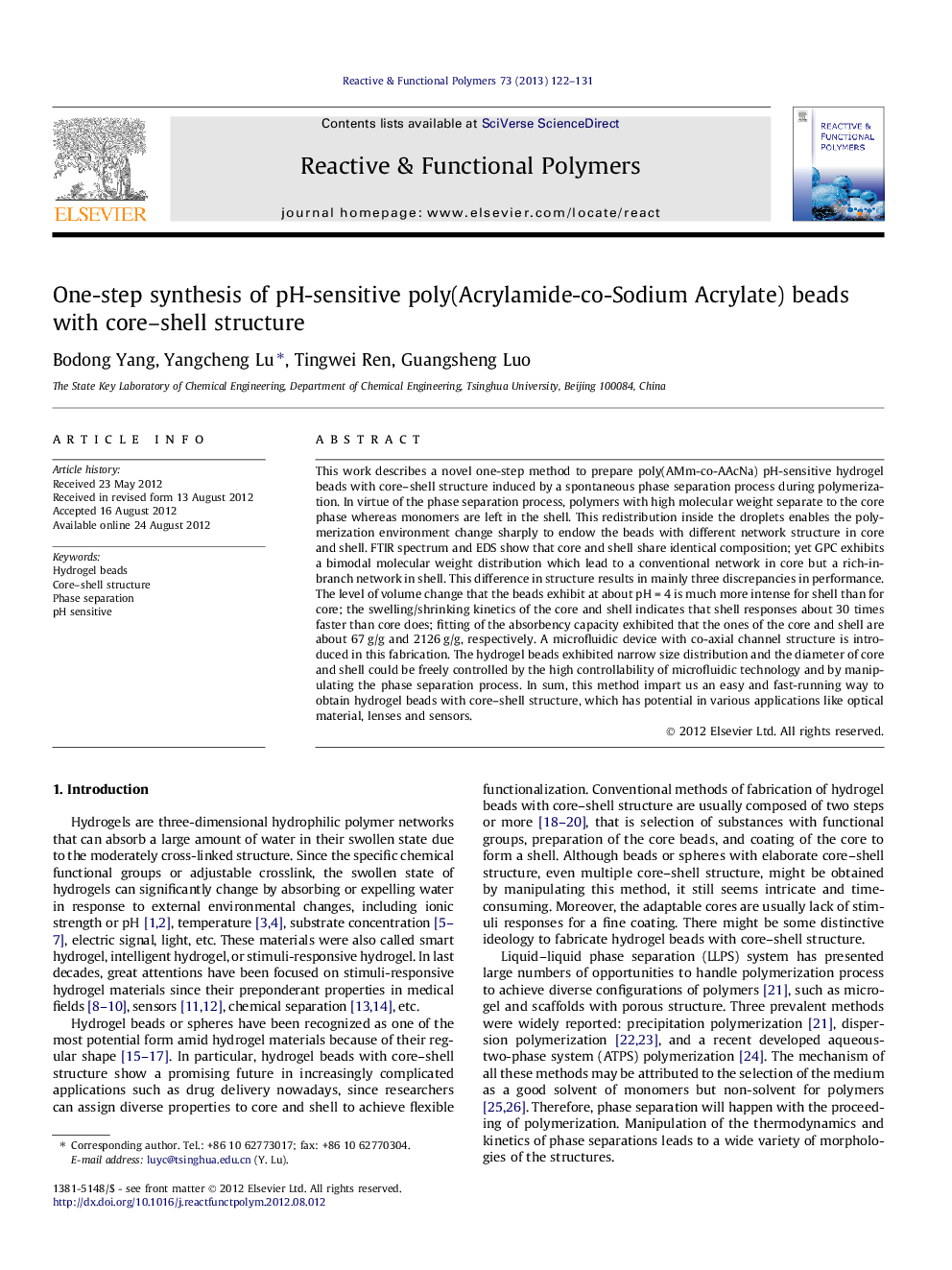| Article ID | Journal | Published Year | Pages | File Type |
|---|---|---|---|---|
| 5210272 | Reactive and Functional Polymers | 2013 | 10 Pages |
Abstract
This work describes a novel one-step method to prepare poly(AMm-co-AAcNa) pH-sensitive hydrogel beads with core-shell structure induced by a spontaneous phase separation process during polymerization. In virtue of the phase separation process, polymers with high molecular weight separate to the core phase whereas monomers are left in the shell. This redistribution inside the droplets enables the polymerization environment change sharply to endow the beads with different network structure in core and shell. FTIR spectrum and EDS show that core and shell share identical composition; yet GPC exhibits a bimodal molecular weight distribution which lead to a conventional network in core but a rich-in-branch network in shell. This difference in structure results in mainly three discrepancies in performance. The level of volume change that the beads exhibit at about pHÂ =Â 4 is much more intense for shell than for core; the swelling/shrinking kinetics of the core and shell indicates that shell responses about 30 times faster than core does; fitting of the absorbency capacity exhibited that the ones of the core and shell are about 67Â g/g and 2126Â g/g, respectively. A microfluidic device with co-axial channel structure is introduced in this fabrication. The hydrogel beads exhibited narrow size distribution and the diameter of core and shell could be freely controlled by the high controllability of microfluidic technology and by manipulating the phase separation process. In sum, this method impart us an easy and fast-running way to obtain hydrogel beads with core-shell structure, which has potential in various applications like optical material, lenses and sensors.
Related Topics
Physical Sciences and Engineering
Chemistry
Organic Chemistry
Authors
Bodong Yang, Yangcheng Lu, Tingwei Ren, Guangsheng Luo,
